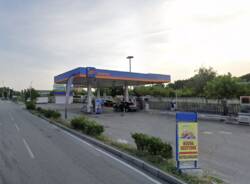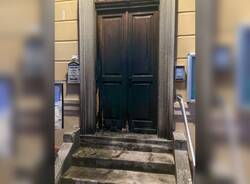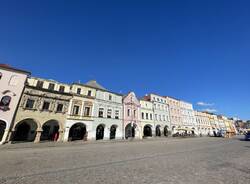Urban metamorphosis in Varese: Villa Maroni in Via Veratti, “sacrificed” on the altar of education
The 48th instalment of the column by Fausto Bonoldi brings us to what today is the Salesian Institute.
Every Monday, on a virtual walk, the column “Urban metamorphosis” talks about the transformations that Varese has undergone in the last one hundred years, that is, since it became the Capital of the Province. The column is written by Fausto Bonoldi, a historic figure in Varese journalism who has covered this topic for years in the Facebook group La Varese Nascosta (“The Hidden Varese”) and who has also written a book, published by Macchione, entitled “Cara Varese come sei cambiata” (“Dear Varese, how you’ve changed”).
Urban metamorphosis, forty-eighth instalment; Villa Maroni, in via Veratti, “sacrificed” on the altar of education.
In the late 1960s, Varese lost another green spot and one of its historic villas. In the month of October 1969, the “pickaxe” tore down the nineteenth-century Villa Grossi Maroni, to make space for the new building complex of the Salesian Institute. The stylish building was bequeathed to the Salesians in the 1930s by Emilia Olgiati Maroni, to enable them to open a hostel for young people, in memory of her son Antonio Tullio, who died at the age of ten.
The hostel was opened in 1936, following preservation work planned by the engineer Andrea Pedoja. A decade later, soon after the end of World War II, the Salesians opened a middle school, which was recognised by the Ministry of State Education, on 14 June 1947.
Fortunately, the construction of the current premises of the “Antonio Tullio Maroni” Salesian Institute spared the first building constructed, between 1826 and 1828, on the grounds of the Casa Comolli, where once, by order of Francesco III, the “Beccherie” (slaughterhouses) were concentrated, by the “physicist doctor” Luigi Grossi, who among his numerous occupations (obstetrician, pioneer of photography and shorthand) found the time to carry on the “Adamollo Chronicle of Varese”.
The building is located between Via Veratti and Via Indipendenza, where the first entrance to the Salesian Institute was put, and it was designed by the eclectic Dr Grossi, who engaged the collaboration of the Milanese architect Gaetano Besia, a lecturer at the Accademia di Brera and a member of the London School of Architecture, to design the façade in the Doric Order. The current entrance to the Salesian Institute is on a square named after Don Bosco, which was once 5 streets wide and which has remained, like the majority of Via Veratti, not only as it was in the past, but has also undergone restoration.
Translated by Giada Colnago and Alessia Castagna
Reviewed by prof. Rolf Cook
La community di VareseNews
Loro ne fanno già parte
Ultimi commenti
Felice su Pomeriggio di botte in piazza Repubblica a Varese: rissa tra una ventina di ragazzi, coinvolti anche minorenni
lenny54 su "Nessuno si è fermato, tranne loro": la mamma racconta il coraggio dei ragazzi che l’hanno salvata con la figlia di 10 mesi
Stefano Montani su Ancora striscioni neonazisti in Valcuvia, procede la Digos di Varese
lenny54 su Pomeriggio di botte in piazza Repubblica a Varese: rissa tra una ventina di ragazzi, coinvolti anche minorenni
elenera su Un progetto che unisce sostenibilità e formazione: aiutaci a realizzare "La Via delle Api"
Felice su Stretta sul reddito di cittadinanza, la Finanza di Varese denuncia 29 persone fra imprenditori e giocatori on line














Accedi o registrati per commentare questo articolo.
L'email è richiesta ma non verrà mostrata ai visitatori. Il contenuto di questo commento esprime il pensiero dell'autore e non rappresenta la linea editoriale di VareseNews.it, che rimane autonoma e indipendente. I messaggi inclusi nei commenti non sono testi giornalistici, ma post inviati dai singoli lettori che possono essere automaticamente pubblicati senza filtro preventivo. I commenti che includano uno o più link a siti esterni verranno rimossi in automatico dal sistema.